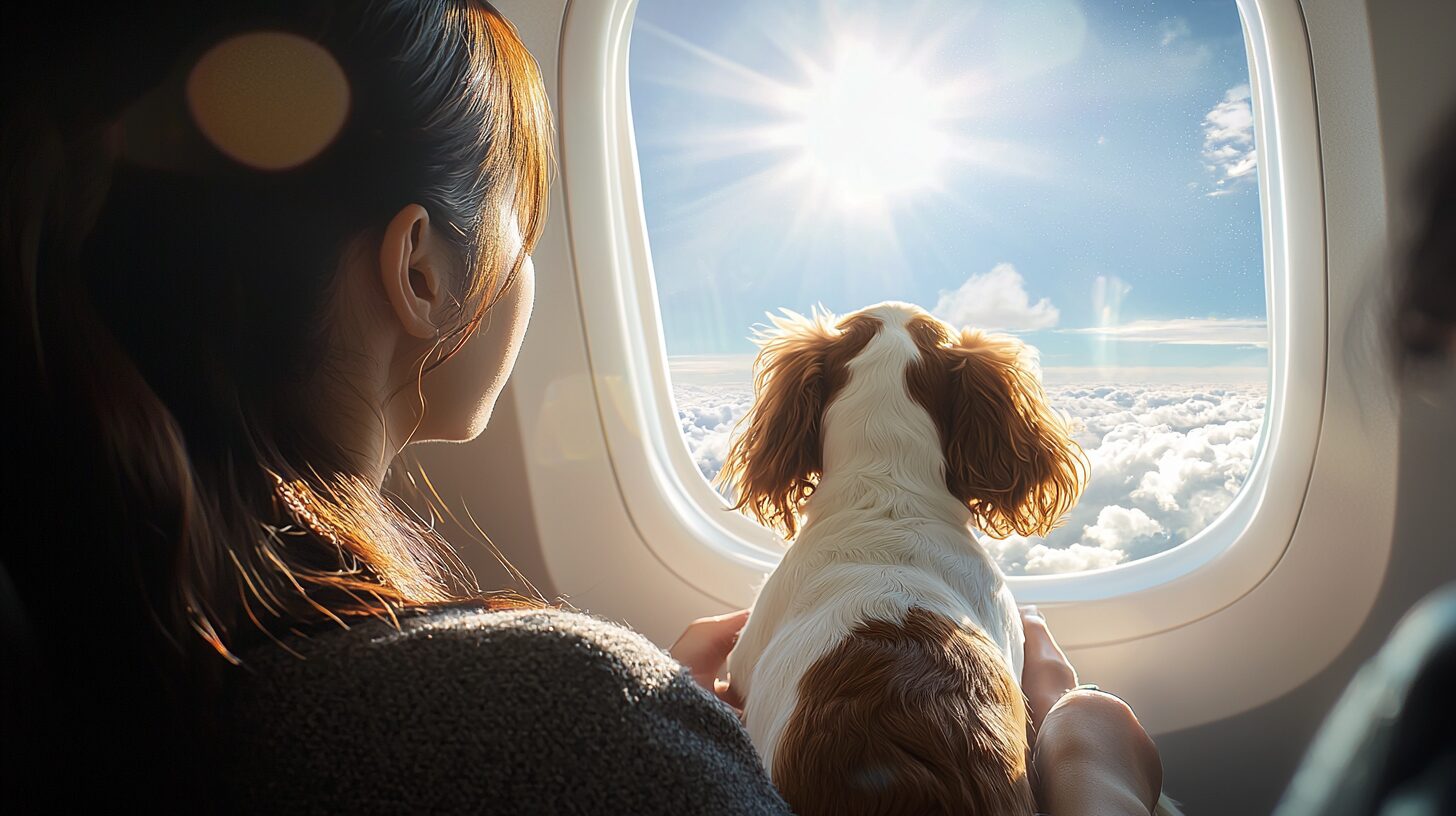Moving abroad is a major life decision, and given the bond you share with your beloved cat, it is natural to want to bring it along. However, there are strict regulations governing the international movement of pets, and careful preparation and time are required.
This article provides detailed information on what you need to know about moving abroad with your cat in peace, from preparation to life in the country. Based on the knowledge of experienced experts and the voices of actual immigrants, we will guide you on the path to success.
Preparation before moving abroad: essential items and procedures

A **minimum of 3-6 months of preparation** is required from the decision to move abroad to the actual destination. The following important items must be planned for.
Microchipping: the international standard for proof of identity
 Image source: Ministry of the Environment
Image source: Ministry of the Environment
It is mandatory in many countries,Microchip installation in accordance with ISO standardsIt is. This is an ultra-compact electronic label implanted subcutaneously that allows for international identification.
The installation procedure is as follows
1. purchase an ISO-compliant microchip at a veterinary clinic (about 3,000 yen)
2. implanted near the neck by a veterinarian
3. issuance and storage of fitting certificates
4. periodic reading checks
From June 2022, it will be mandatory in principle for dogs and cats sold in pet stores and other stores in Japan to be fitted with the device. Registration of owner information within 30 days of installation is also mandatory.
Rabies Vaccination: Basic Requirement for International Migration

Rabies is a serious infectious disease that causes more than 50,000 deaths annually worldwide and is fatal to cats. For this reason, vaccination is mandatory in many countries.
The standard vaccination schedule is as follows
1. 1st dose at 91 days of age or older
2. second inoculation after an interval of at least 30 days
3. must be completed at least 30 days prior to travel
4. secure storage of inoculation certificates
Many countries also require negative proof of a "rabies antibody test. The test is conducted at least 180 days after the second vaccination, so the first vaccination must be completed 7 months prior to travel.
Obtain import/export permits and arrange transportation: check country-specific requirements
The documents and requirements vary greatly depending on the destination. Below are some examples:
- EU countries: proof of non-infection with rabies and leptospirosis required
- Australia: Strict quarantine system, temporary mooring required
- Hong Kong and Singapore: prior import license required
Two to three months prior to travel, ensure that the following items are checked
- Preparation of IATA compliant crates
- Securing necessary hygiene supplies (pet sheets, water bottles, etc.)
- Climate change equipment (clothing, harnesses, etc.)
Preparation for local acceptance: preliminary environmental checks
**Securing pet-friendly accommodation** is essential for a smooth start to life abroad. We recommend the following preparations
- Listing of pet-friendly properties and hotels
- Research local pet sitting services
- Confirmation of a temporary storage location in case of emergency
- Gathering information on nearby veterinary hospitals
Animal Import Regulations and Documentation Requirements: Understanding Country Specific Requirements

Import regulations in various countries tend to become stricter each year, and the following conditions are common
- Valid rabies vaccination certificate
- Government-issued animal quarantine certificate
- Compliance with quarantine period (maximum 180 days)
- Negative proof of specific infectious disease
- Proof of ISO-standard microchip installation
Transporting Cats by Air: For Safe Travel

It is important to choose a transportation method that puts your cat's safety and comfort first. This section describes the main transportation options offered by airlines and the features of each.
Carry-on (cabin) transport
It is the least stressful transportation method. The following conditions must be met
- Carry-on baggage: within carry-on baggage size regulations
- Passenger limit: 1 animal per passenger
- Reservations: Must be secured in advance (first-come, first-served)
Cabin bags must conform to airline-specified standards and have the advantage of being visible at all times while in transit. However, due to the limited number of cabin bags that can be accepted, it is strongly recommended** to make arrangements at the same time the ticket is booked.
Cargo Transportation
This is an option if you do not meet the carry-on requirements. Special attention should be paid to the following
- Ensure proper ventilation and safety
- Prepare necessary water supply and feeding facilities
- Transportation in temperature-controlled cargo holds
Because long flights can be stressful for cats, it is important to prepare for the following
- Advance veterinary consultation (prescription of light sedatives if needed)
- Create a comfortable environment (favorite blanket, etc.)
- Ensure adequate hydration
- Confirmation of emergency response procedures
Pre-training for transportation
For smooth transfers, the following training will be conducted step-by-step
- Familiarization with the cage environment: placement of toys and preferred bedding
- Short stay practice: gradually extend time
- Simulation of the environment on the move
- Positive associations: rewards and skinship
- Aim for a steady stay of about 30 minutes.
Finding a local veterinarian and pet care system

Selection of a reliable veterinary hospital
Securing local medical care is a top priority. Use the following methods to gather information:
- Referrals from the Japanese community
- Use of information websites for expatriates
- Database of Veterinary Medical Associations in each country
- Medical Information Service for Japanese Residents
The selection will place particular emphasis on the following points
- Availability of Japanese language support
- Confirmation of emergency transport service
- Enrollment of medical specialists
Medical Insurance and Support Services
- Multilingual Interpretation Services
- Emergency transport assistance
- Specialist Referral Service
Local pet supply procurement
Since it is often difficult to obtain Japanese products overseas, the following measures are important:
- Consider using online shopping sites
- Ensure regular import routes from Japan
- Preliminary investigation and trial of local alternatives
In particular, check in advance how to obtain the following necessities locally:
- Cat food usually used
- Favorite cat litter
- Medicine and supplements
- Grooming Supplies
Cat Health Care and Preventive Medicine

Local-specific infectious disease control
Overseas, one should also be aware of infectious diseases that are rare in Japan:
- Feline immunodeficiency virus infection (FIV)
- Feline infectious peritonitis (FIP)
- Various parasitic diseases
Manage immunization schedule

The following vaccinations should be continued as appropriate after travel:
- Mixed vaccine: once a year
- Leukemia vaccine: once a year
- Other locally recommended vaccines: Consult with veterinarian
Stress management due to environmental changes
Cats are sensitive to environmental changes. They need special care in adapting to their new environment.
Symptoms to watch for as signs of stress:
- Anorexia and overeating
- Disturbance of defecation habits
- Excessive grooming
- Behavior that tends to be hidden
The following are recommended as countermeasures
- Dedicated space
- Maintaining a regular rhythm of life
- Use of stress-relieving products
- Ensure sufficient time for skin-to-skin contact
Trouble-shooting and emergency preparedness

Physical condition at the time of travel
Main risks and countermeasures for long trips:
- dehydration
- Panic due to stress
- Poor physical condition and loss of appetite
- Effects of environmental temperature changes
Response measures:
- Prior consultation with a veterinarian
- Consider medication as needed
- Creating a comfortable travel environment
- Prepare for adequate hydration
Prevention of accidents on site
Ensuring your safety in a new environment is of paramount importance. Thoroughly implement the following measures
- Thorough measures to prevent escape
- Elimination of hazardous materials
- Clarify emergency contact information
- Insurance Considerations
summary
Moving abroad with your cat requires careful preparation and careful planning, but by taking the appropriate measures, you can realize a safe and comfortable life abroad. PetAir JPN provides support to make these complicated procedures simple and reliable.
Our professional staff, well versed in the import regulations and health standards of each country, provide attentive service with the health and safety of our customers and their pets as our top priority.
Frequently Asked Questions (FAQ)
A1: Usually 3 to 6 months is the standard. We recommend starting preparation at least 7 months in advance, especially if a rabies antibody test is required.
Q2: What is the estimated cost?
A2: We can provide you with a detailed estimate including processing fees, transportation costs, inspection fees, etc., which vary greatly depending on the destination and transportation method.
Q3: Is it safe for older cats?
A3: A veterinarian will perform a physical examination and decide whether or not the animal can be moved based on its individual condition. If necessary, we will also propose a special care plan.
Q4: Do I have to worry about local medical care?
A4: We will introduce you to a network of reliable veterinary hospitals in each country to support smooth access to medical services.
🌏 Toward Safe Overseas Migration: PetAir JPN's Total Support" 🐾

Moving abroad with your cat is a major project that requires careful preparation and expertise. As explained in this article, the following factors are keys to success
- Accurate understanding of various regulations and requirements
- Thoroughly manage your cat's health and take precautionary measures
- Preparation of local living environment
- Emergency Response Plan Development
Ensuring these preparations will help you start your new life with your cat smoothly. In particular, pay close attention to the following points:
- Pre-departure medical examination and required vaccinations
- Stress reduction measures during transportation
- Ensure local medical system
- Procurement plan for daily commodities
PetAir JPN can provide consistent support for these complex procedures.
- Providing the latest regulatory information in each country
- Preparation of necessary documents and procedures on behalf of the client
- Proposal of optimal transportation methods
- Coordination of local reception arrangements
Please feel free to consult with us at any time.

A must see if you are considering moving abroad with your pet. Explains the characteristics of Australia, Canada, France, and Switzerland and their consideration for pets. We will introduce you to a way of life where both you and your dog or cat can live in peace.
Please share your experiences and opinions!

Do you have any experiences or questions about traveling abroad with your pet?
If you have actually experienced this, please share with us the points you took care of in your preparation and any problems you had while traveling. We also welcome questions from those who are thinking of traveling to Japan in the future.
Please feel free to comment on any concerns you may have, such as
Your comments will be of great help to others who are struggling with the same issues. Please share your thoughts and questions in the comments section below!
![Support for pets traveling and moving overseas|PetAir JPN [Official] for international transportation and quarantine procedures for dogs and cats Support for pets traveling and moving overseas|PetAir JPN [Official] for international transportation and quarantine procedures for dogs and cats](https://petair.jp/wp-content/uploads/2024/08/main_logo.png?1763387597)



Comment